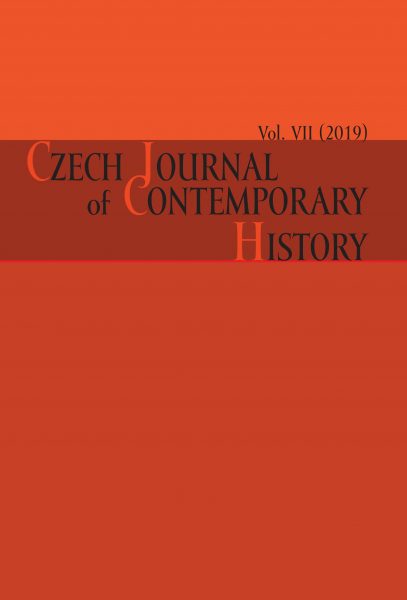Jozef Tiso: My Enemy – Your hero?
Jozef Tiso: My Enemy – Your hero?
Author(s): Jan RychlíkSubject(s): Local History / Microhistory, Political history, Recent History (1900 till today), History of Communism, Fascism, Nazism and WW II
Published by: AV ČR - Akademie věd České republiky - Ústav pro soudobé dějiny
Keywords: Jozef Tiso; Enemy; Hero;
Summary/Abstract: The author first summarizes the career of Jozef Tiso (1887–1947), a politician and a Roman Catholic priest. His entire political life was linked to Hlinka’s Slovak People’s Party; he was always a representative of its moderate faction, and even represented it as a minister of the Czechoslovak government. In 1939, he became its chairman. In the First Czechoslovak Republic, he was a dyed-in-the-wool federalist; since the proclamation of the Slovak State in March 1939 until the end of his life, an advocate of Slovakia’s independence. As the president of the Slovak Republic between 1939 and 1945, he was responsible for Slovakia’s political regime, alliance with the Nazi Germany until the end of the war, and deportations of Slovak Jews. After the war, he was tried by the National Court of Justice, sentenced to death, and executed in 1947. The author analyzes in detail the accusations brought against Tito during the trial and Tiso’s defence, as the arguments presented by both parties were later used by Tiso’s adversaries and sympathizers. Czech politicians and general public after the war were united in their condemnation of Tiso; in their eyes, Tiso’s biggest crime was his share in the destruction of the common state. On the other hand, the Slovaks’ view on Tiso depended on their attitude toward the previous political regime in Slovakia. Furthermore, the author monitors how Tiso’s cult was formed in the separatist segment of the Slovak exile since the end of the war. It was spreading mainly in the United States, Canada, and Argentina, but the efforts aimed at Tiso’s moral purification were unsuccessful. The article also pays special attention to Tiso’s reflections in the Czech and Slovak dissent in the 1970s and 1980s. In the end, the author describes disputes over Tiso which broke up after 1989 in Slovakia and which were a part of the “return of history” to the public space. They were related to attempts for Tiso’s commemoration and historical rehabilitation, and found their way to the media, politics, and historiography. The essay is concluded by a statement that the Czech society is not interested in Tiso as a historical figure, but that Tiso still divides the Slovak one: a minority of the Slovak society sees Tiso as a hero and a martyr, while most Slovaks perceive him as an unsuccessful and discredited politician.
Journal: Czech Journal of Contemporary History
- Issue Year: VII/2019
- Issue No: 7
- Page Range: 44-64
- Page Count: 21
- Language: English

